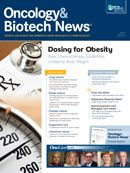Publication
Article
Which Practice Model Is Best for You?
Author(s):
Community oncologists must weigh multiple factors when deciding to consolidate or remain independent.
Figure. Changing Trends in Location of Cancer Care
(Source: goo.gl/1M2Gy. Published August 15, 2012. Accessed September 10, 2012.)
According to a study by the consulting firm Inside Oncology, the majority of patients with cancer will be treated outside of private community practices by 2016 (Figure). The same report noted that 5 years ago, the split was generally seen as 80% community versus 20% hospital-based care. Today they estimate that ratio has changed to 50/50.
In this changing landscape, community practices must decide whether to remain independent or become part of a larger practice model. “Current trends certainly have not favored the smaller office model,” said David Eagle, MD, president of the Community Oncology Alliance. “If you think the trends are going to continue, you have to look at all of your options, including bigger practices.”
Long-Term Planning Constraints
Despite the need to be forward-looking, however, planning ahead has become increasingly difficult for community practices as the healthcare “crystal ball” continues to get murkier.
“Most oncologists I have talked to have given up on long-term planning within their practice,” said Eagle. “Planning anything beyond a 5-year time horizon is not seen as viable in the current environment. We have had too many predictions of what is ‘inevitable’ in medicine that later failed to materialize.”
Regardless of this uncertainty, however, oncologist must choose a practice path. In making this decision, they will have to weigh several key factors.
Medicine Is a Business
It is impossible to separate the medical and financial components of oncology practice. Money has to come in to pay the physician for his or her time, support the many services to patients that are required, hire a staff, pay for the new electronic health records and quality of care documentation needed to give excellent care, and get paid for giving that excellent care.
“Larger groups and hospital-based practices usually have access to greater resources,” said Kenneth Hertz, FACMPE, principal with Medical Group Management Association Health Care Consulting Group. “It is imperative that you have business resources available to analyze, run, manage, improve and correct, the medical side of the equation.”
Additionally, larger practice models may result in a paycheck and resources for patient care that might not be as readily available in a small private office. Most of the day-to-day business operations are shouldered by the hospital or larger group, freeing up more time for seeing patients, keeping up with the changes in treatment, and other professional undertakings.
Regional Variables
Regional factors must also be considered is choosing a practice model. For example, Therese Mulvey, MD, physician chief at Southcoast Centers for Cancer in New Bedford, Massachusetts, noted that in her state, laws have long banned physician-owned ancillary services, such as imaging suites. This means that physicians practicing in the state have not been able to subsidize the under-reimbursed costs of oncology treatment using income from these other services. Conversely, those in other states may have added problems if they need to replace this source of cash flow as Medicare and private insurers move toward bundled payments or episodic care.
Risk Shouldering
The advent of these newer payment methods also may mean that more of the financial risks are transferred to the physician and practice. This incentivizes community oncologists to join larger practice models, because the more people you have to spread the risk over, the easier it becomes to manage.
“The margin for error has become so small that you not only have to be at the top of your game, but you have to stay there,” noted Hertz. “Being a good doctor is important, but that is pretty much the minimum. It gets you into the game, but that is all.”
Healthcare Reform
One of the major unknowns is how the Patient Protection and Affordable Care Act is going to impact practices. The sudden influx of new, paying patients may keep smaller practices afloat.
“We still don’t have a good handle on what is going to happen in 2014 when a large population of patients suddenly gains insurance,” said Vivian Ho, PhD, the James A. Baker III Institute Chair in Health Economics at Rice University in Houston, Texas. “More people getting insurance and needing care means there is more money flowing into a system that may have to cope with physician shortages.”
Ho said the impact will vary between states. “The benefit to oncologists from increasing the number of insured depends largely on the number of uninsured in a given state,” she said. “In Texas, where 25% of the population is uninsured, I think there will be a benefit. Now, whether that is going to be the same in places like Connecticut, where there are already generous plans in place, is an open question.”
Patients First
And yet, despite all of these complex considerations, Mulvey is hopeful that an oncologist’s choice of practice model will still boil down to one noble criterion. “Most of us who have changed our practice situations did so after a lot of thought,” said Mulvey. “It is not just about the money. It is simply how do I best maintain the ability to care for my patients?”
Brought to you by
Reference
Guy D, Rodgers S. Most cancer patients will be treated in integrated delivery networks (IDN) and cancer institutions by 2016, predicts new report. http://goo.gl/1M2Gy. Published August 15, 2012. Accessed September 10, 2012.








